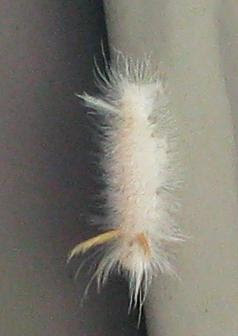I had planned to paint the front door today. But, I didn't have the heart to scrape off or paint over the many critters hanging out there.
skip to main |
skip to sidebar
My Friends' Blogs
Blog Posts
-
▼
2008
(346)
-
▼
September
(42)
- Why is this taking so long???
- A Needed Distraction
- Cortina Valley
- Notre Dame Beats Purdue
- Bread Bag Comes to Life
- Social Media at its Finest
- Go Jimmies
- What a Difference Some Paint Makes
- Wouldn't I Look Great in This
- Planting a Tree is Easy...
- Planting a Tree is Hard
- Garage Floor Epoxy Project - Day 3
- Fall Chores Continued
- Garden Cleanup
- Still Running After All Those Miles
- Sign of the Times
- Honey Bees
- The Speak Out Column in The Paper
- I Love Gumbo!
- SNL
- Hope you filled up before the hurricane hit
- New Church in Osceola...
- New Grass
- It's Official...
- Rainy Morning
- Fun with Potatoes
- Celebrating New Beginnings
- September 11, 2001 Remembered
- Still Working on Curb Appeal Project
- Another Freaky Bug
- No Painting Today
- Many Critters Hanging Out in Our Yard Today
- New Fall Sweater
- Where is Room 800?
- Such beauty
- My Biggest Fear
- Colorful Bug
- Free Butt Rub
- The last tomato
- A Grandma Sweatshirt
- Hummingbird Feeder
- Still Rocking
-
▼
September
(42)
Blog Posts by Category
- Ancient History (4)
- Around the House (64)
- Bizarre Thoughts (3)
- Business Travel (5)
- Camera (3)
- Car (6)
- Celebrations (6)
- Chicago (18)
- Christmas (19)
- Clothes (2)
- Clydesdales (1)
- Comedy (1)
- Commercials (1)
- Computers (1)
- Easter (1)
- Economy (1)
- Fall (17)
- Family (39)
- Farm House (1)
- Flying (3)
- Food (9)
- Friends (44)
- Garden (77)
- Getting in Shape (5)
- Goals (1)
- Guitar Hero (6)
- Healthy Living (1)
- Holidays (4)
- Home Improvement (1)
- HomeFurnishings.com (1)
- Internet (2)
- Memories (4)
- Michiana Area (72)
- Movies (1)
- Music (2)
- Mustang (4)
- Nature (18)
- Oddities (1)
- Orlando (3)
- Pets (9)
- Playstation (1)
- Politics (2)
- Product Reviews (2)
- Random Web Links (10)
- Restaurants (3)
- Rock Music (1)
- Shopping (5)
- Spike (20)
- Sports (4)
- Spring (1)
- St. John (4)
- Suburbia (6)
- Summer of Fun (44)
- Superbowl (1)
- Television (12)
- TV Commercials (2)
- Vegetable Garden (21)
- Veterans Day (1)
- Videos (2)
- Weather (5)
- Wildlife (21)
- Winter (18)
- Work (11)





2 comments:
Okay--it was because of the last scary one--wasn't it? -gg
How to predict winter with wooly worms
By OutdoorWoman
Will it be a mild winter or severe? Ask the wooly worm.
Using wooly worms (Pyrrharctia isabella) to predict winter is old American folklore that traces its history back to early Americana. Supposedly, Native Americans taught the pioneers to read wooly worms to predict winter weather. Wooly worm is the common name for the larval stage of the Isabella Tiger Moth. They are also called wooly bears.
Look for wooly worms under rocks and inside hollow logs.
Examine the wooly worm, paying attention to its bands of colors. The wooly worm will curl into a ball when touched or threatened. When they crawl, they can crawl very quickly!
Wooly worm forecasters say that the size of the brown band of color will tell you what kind of winter is coming. Legend says that the thinner the brownish red bands, the harsher the winter will be. If the wooly worm is mostly brownish red in the middle, winter will be mild.
Wooly worm enthusiasts claim an 85 percent success rate over the last few decades. Scientists tend to disagree and say wooly worm weather prediction is as unscientific as using groundhogs to predict winter weather. The groundhogs likely side with the wooly worms.
Whether or not you believe in the power of wooly worms, they can be a fun project for children and adults.
Post a Comment